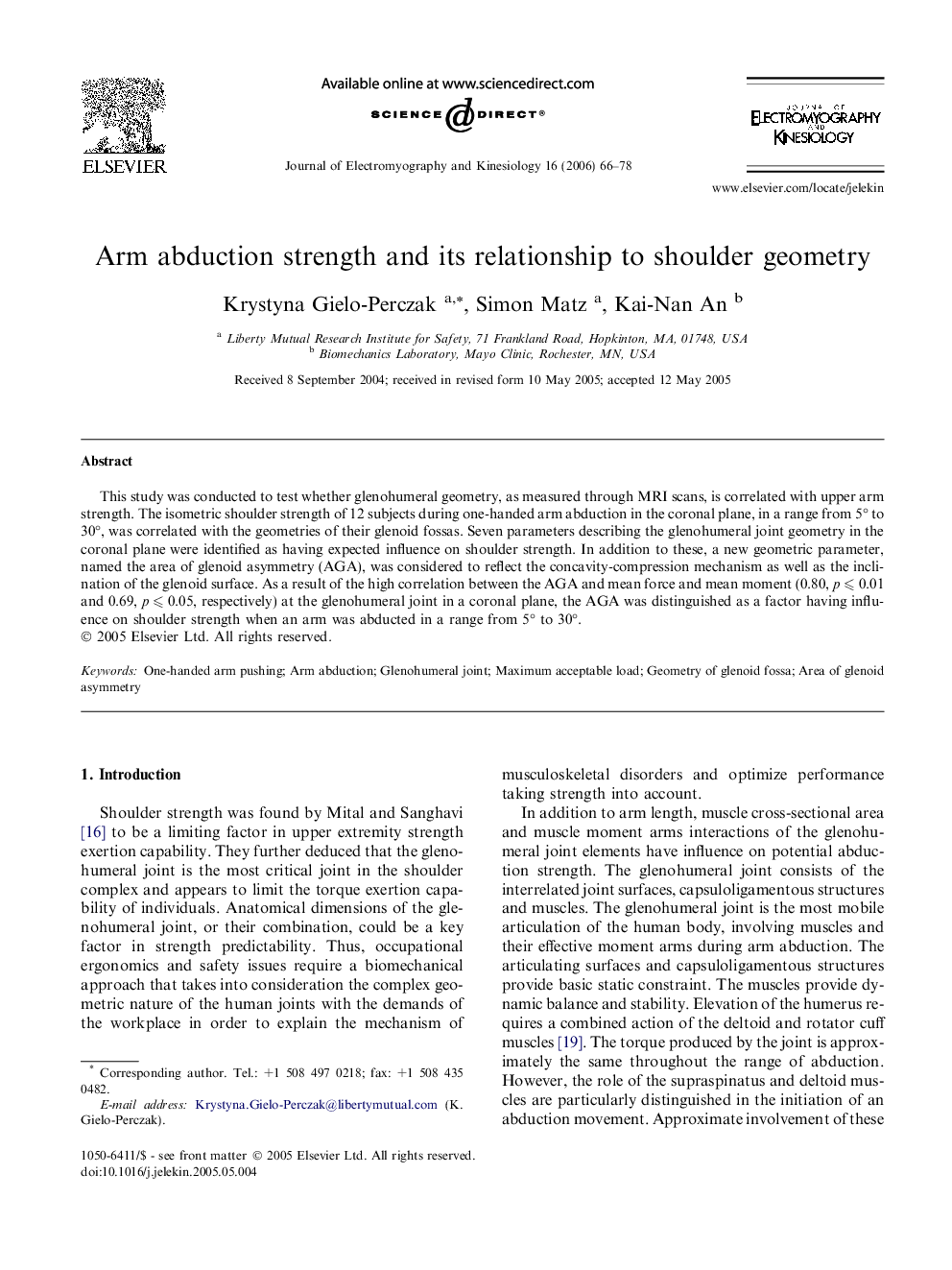| کد مقاله | کد نشریه | سال انتشار | مقاله انگلیسی | نسخه تمام متن |
|---|---|---|---|---|
| 4065516 | 1266255 | 2006 | 13 صفحه PDF | دانلود رایگان |

This study was conducted to test whether glenohumeral geometry, as measured through MRI scans, is correlated with upper arm strength. The isometric shoulder strength of 12 subjects during one-handed arm abduction in the coronal plane, in a range from 5° to 30°, was correlated with the geometries of their glenoid fossas. Seven parameters describing the glenohumeral joint geometry in the coronal plane were identified as having expected influence on shoulder strength. In addition to these, a new geometric parameter, named the area of glenoid asymmetry (AGA), was considered to reflect the concavity-compression mechanism as well as the inclination of the glenoid surface. As a result of the high correlation between the AGA and mean force and mean moment (0.80, p ⩽ 0.01 and 0.69, p ⩽ 0.05, respectively) at the glenohumeral joint in a coronal plane, the AGA was distinguished as a factor having influence on shoulder strength when an arm was abducted in a range from 5° to 30°.
Journal: Journal of Electromyography and Kinesiology - Volume 16, Issue 1, February 2006, Pages 66–78